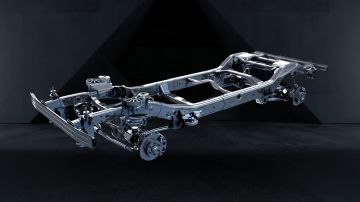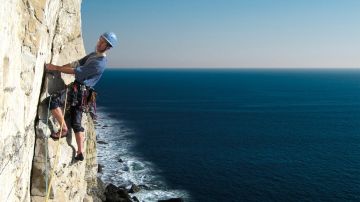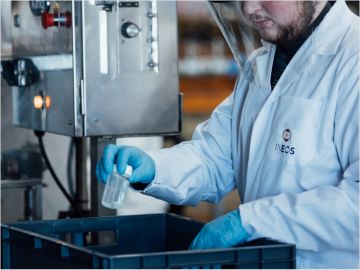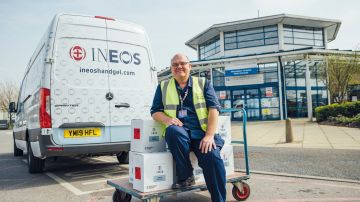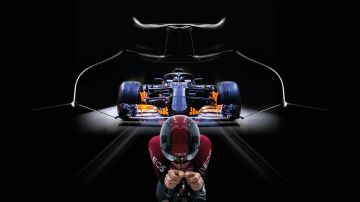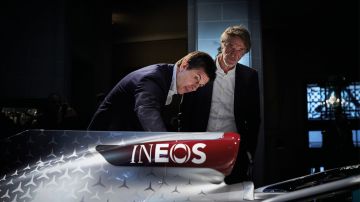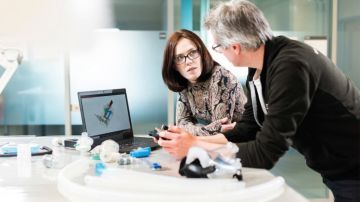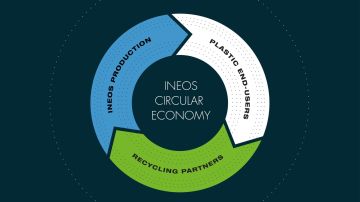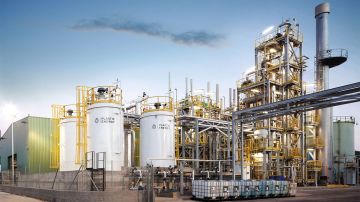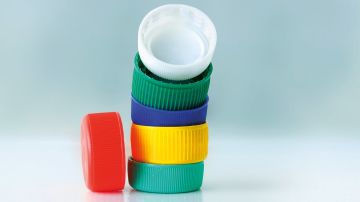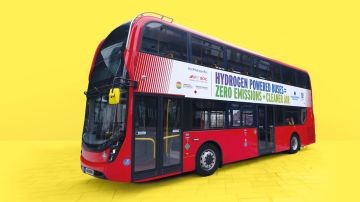Great minds from INEOS' British challenger for The America's Cup, TEAM INEOS and Mercedes' F1 team are now working together to become unbeatable.
What appealed to INEOS, in signing the technical partnership, was Mercedes’ grit and determination to redefine what is humanly possible.
What Mercedes-AMG Petronas F1 team likes about INEOS is its dynamism and entrepreneurial flair.
“What unites us is the ambition and the competitiveness,” said Toto Wolff, Team Principal and CEO of Mercedes-AMG Petronas F1 team. “We are very excited about this agreement’s potential.”
At the heart of these three teams is a shared passion to drive, sail and pedal faster than anyone else in the world. And work has already started.
Eighteen technical engineers from Mercedes’ applied science division are now working full-time at INEOS TEAM UK’s headquarters in Portsmouth to help INEOS build a race boat to win next year’s America’s Cup for the first time in the competition’s 170-year history.
They are pooling their expertise and showing they work almost as quickly off the track as they do on it.
“The rate of development is astonishing for the top teams,” said Graham Miller, who is leading the partnership from Mercedes’ side. “One of the things we can offer is the ability to fast-track developments.”
At Brackley, Mercedes has an enormous manufacturing capability with some of the world’s best manufacturing tools and the ability to fit 170 aerodynamicists around a 16ft x 5ft car.
“The benefit back to the team is the rate of development,” said Graham. “Some of it is reactionary if the team faces issues, but some is proactive and planned development.”
Mercedes’ team will be looking at aerodynamics, simulation and the planning precision and processes needed from concept to design to manufacturing.
“You can have the best design in the world but if you don’t leave enough time to produce it, it’s no good to anyone,” said Graham. “You have to strike that balance between the point you have to release that concept to detail design, to the point you have to release that detailed design drawing to manufacturing and then release it from manufacturing to assembly.”
Late last year The America’s Cup team launched their first AC75 race boat – a foiling monohull that flies on wings.
“Our boat really shouldn’t sail because it is effectively a 10-storey building sailing on a coffee table,” said INEOS Chairman Sir Jim Ratcliffe. It has, he said, been a technical challenge. Graham said his team from Mercedes would be able to learn valuable lessons from that.
“Formula 1 is all about minimising weight and maximising stiffness,” he said. “But the hydrodynamic loads in the boat are just enormous. Just to be able to help design in that environment with such extreme loads is potentially useful for us in the future because you get exposed to different materials.”
A second race boat will be launched this year. It will be the most technical ever built with an estimated 30,000 component parts needed to work in perfect symmetry to allow the 75ft boat and 11-man crew to fly’ during the race itself.
The crossover between aviation and F1 racing already exists. “We sometimes describe our cars as low-flying aircraft,” said Graham.
Simulation will also be critical, said Graham, so that the British sailing crew can test what works and ultimately learn how to sail, or rather fly, the boat.
“It’s a platform that has never been sailed before so simulation is a critical developmental tool,” said Graham. “The more they use the simulator and develop it, the more that will lead to performance development on the water and speed.”
Aerodynamics have been the focus of F1 teams for years in the drive for efficiency and performance. “A 2004 Formula 1 car looks like a complete brick compared to modern day cars,” said Graham.
Over the years the changes have come down to minute, microscopic developments. “Because of the limited resource we have always had, we have tended to look at the big rocks in the field and how we can manipulate those,” said INEOS TEAM UK’s chief designer Nick Holroyd.
“Mercedes have allowed us, both by helping us with the resource and by mindset, to drill down into a fine level and shown that when you get a lot of those details right, they can actually add up to quite a significant gain.” Although the focus is primarily on The America’s Cup team, Mercedes will also be working with TEAM INEOS, formerly TEAM SKY, which has dominated The Tour de France for years.
“We cannot wait to get started,” said team principal Sir Dave Brailsford. “Our unrelenting determination to outwit the ever-improving competition will benefit hugely from this partnership.”
Meanwhile, Sir Ben Ainslie, who will skipper the 75ft monohull in next year’s America’s Cup race, said Mercedes’ involvement had been a huge boost to his team.
“There’s an incredible amount of synergy across all the sports, Formula 1, cycling and the America’s Cup,” he said. “It’s a fascinating mixture of pushing the boundaries of technical innovation alongside sporting prowess.”
What has surprised Graham most, though, so far, is how the rules change from one America’s Cup race to the next.
“In one, the crew may race in a catamaran, the next in a 75ft monohull,” he said. “We may have big rule changes in F1, but ultimately you’ve always got four wheels, a front wing and a back wing. It would be like us going from a motorbike to a car to a truck.”
